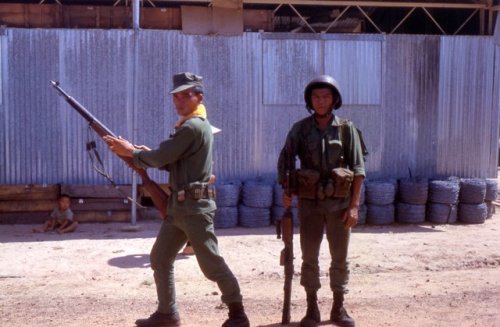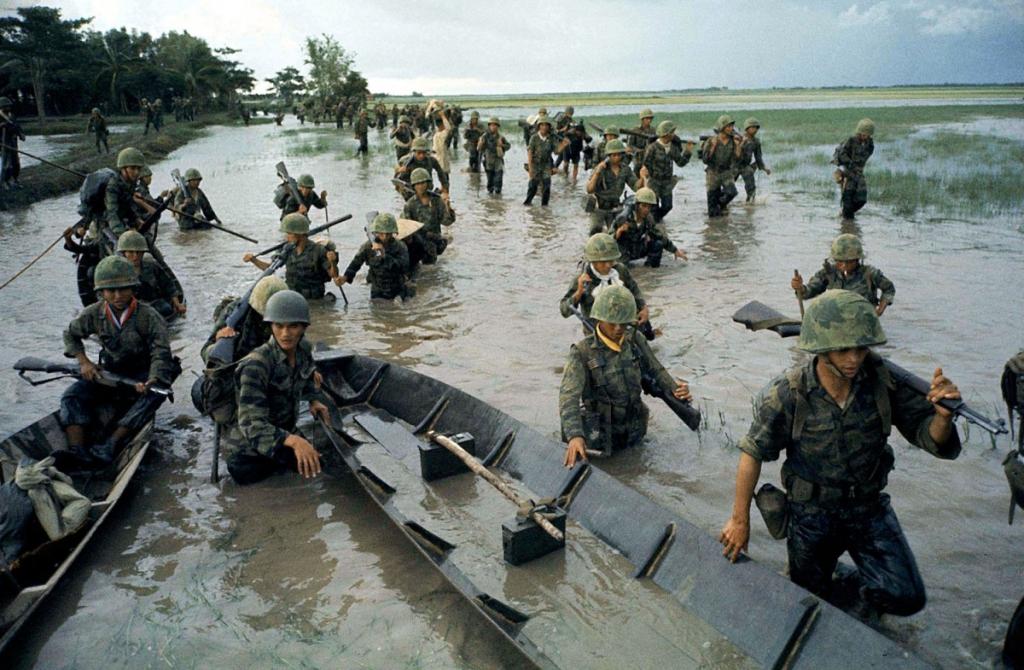- Joined
- Aug 22, 2011
- Messages
- 725
- Reaction score
- 720
I love that documentary.There was a reason Josey Wales carried 12 pistols!!!! LOL,LOL

I love that documentary.There was a reason Josey Wales carried 12 pistols!!!! LOL,LOL
To be fair, plenty of M1's were used in Viet Nam by ARVN troops and CIDG irregulars.You'd probably be devastated then watching the History Channel when they show reenactments of historical events. Once saw a cap lock rifle in an event that happened before the era of cap locks. Saw a match lock being used in a modern-day event. One saw an episode about the OK Corral shoot out. The Earp Bros. were using C&B revolvers. Saw an M1 Garrand being used in Viet-Nam. You get the idea. Think sometimes to those doing these reenactments a gun is a gun regardless of period correctness.
Well, i guess it is just semantics, but being unreal is not actually why they are called movies even though they are in fact unreal. I think the term movie came about when the industry first made pictures that moved. Uh oh, I'm getting way off topic and far away from muzzleloaders.Why they are called movies it aint real.
Get on a horse and try to do that and get back to reality..the cylinder swap deal is all hollyweard vs then swap? hello extra guns.
Evidence of how we all have made the grave mistake of believing that the "media" knows what it is talking about.You'd probably be devastated then watching the History Channel when they show reenactments of historical events. Once saw a cap lock rifle in an event that happened before the era of cap locks. Saw a match lock being used in a modern-day event. One saw an episode about the OK Corral shoot out. The Earp Bros. were using C&B revolvers. Saw an M1 Garrand being used in Viet-Nam. You get the idea. Think sometimes to those doing these reenactments a gun is a gun regardless of period correctness.
Saw M1-M2 carbines. In fact, I carried and M2. Full size Garands, NOPE! Was all over that country, trucking supplies and such, for a while working a TMP. In fact, in one Montagnard village, saw a match lock rifle. As for C&B at the OK Corral, C&B would have probably still been around, but in this clip. the caps were clearly visible on the nipples. Even by that time, rim-fire cartridges were becoming a rarity with just a few 'old' .44 Henery's around.To be fair, plenty of M1's were used in Viet Nam by ARVN troops and CIDG irregulars.
Also, it's not outsidethe realm of possibility for a C&B cartridge conversion to have been used at the OK corral.
Saw M1-M2 carbines. In fact, I carried and M2. Full size Garands, NOPE! Was all over that country, trucking supplies and such, for a while working a TMP. In fact, in one Montagnard village, saw a match lock rifle. As for C&B at the OK Corral, C&B would have probably still been around, but in this clip. the caps were clearly visible on the nipples. Even by that time, rim-fire cartridges were becoming a rarity with just a few 'old' .44 Henery's around.


Understood about the caps. I agree that would have been long gone.Saw M1-M2 carbines. In fact, I carried and M2. Full size Garands, NOPE! Was all over that country, trucking supplies and such, for a while working a TMP. In fact, in one Montagnard village, saw a match lock rifle. As for C&B at the OK Corral, C&B would have probably still been around, but in this clip. the caps were clearly visible on the nipples. Even by that time, rim-fire cartridges were becoming a rarity with just a few 'old' .44 Henery's around.
I think the Rimfire lasted a lot longer than some people think. I spent time around an old cabin foundation The cabin was built around 1890 and there were quite a few .44 Henry and .56 spencer casings scattered around the area. The Henry’s all had the two opposing firing pin indents of the model 1866 Winchester not the single one of a revolver. I believe they made ammo for both up until WW I but I don’t have documentation.Saw M1-M2 carbines. In fact, I carried and M2. Full size Garands, NOPE! Was all over that country, trucking supplies and such, for a while working a TMP. In fact, in one Montagnard village, saw a match lock rifle. As for C&B at the OK Corral, C&B would have probably still been around, but in this clip. the caps were clearly visible on the nipples. Even by that time, rim-fire cartridges were becoming a rarity with just a few 'old' .44 Henery's around.
I think the Rimfire lasted a lot longer than some people think. I spent time around an old cabin foundation The cabin was built around 1890 and there were quite a few .44 Henry and .56 spencer casings scattered around the area. The Henry’s all had the two opposing firing pin indents of the model 1866 Winchester not the single one of a revolver. I believe they made ammo for both up until WW I but I don’t have documentation.
The poor metallurgy of the early Colt Dragoons and Patersons allowed burst cylinders occasionally. For this reason Colt often shipped those guns with a spare cylinder just in case.Thanks for posting this. Gives us some good historical insight. The Patersons were much earlier, 1837-1842 and aside for use by the Texas Rangers were not very popular. They were sold with the extra cylinder being part of the package so past that point I doubt those cylinders were ever marketed.
It may be one thing to do for practice but under actual combat conditions on horseback? I have questions… I’ve seen Marines and soldiers fumble reloads with unmentionable combat weapons, can’t manage simple stoppages, etc. It’s not hard to see how swapping cylinders at a canter while dodging bullets or arrows could go south rapidly. I’m sure it happened but doubt it was common. How many civil war era rifles have been found with multiple loads stuffed down the bore but never fired?I have done it on horseback at a canter but I have been riding a long time.........oh so did they.
If in Indian territory or a mining situation I would have been as well armed as pssible and still be able to function.
Getting caught alive was not the way to go.
Those peoples scalps would be on display in a dance ceremony........ being ill prepared doesn't change the reality at hand for the better.It may be one thing to do for practice but under actual combat conditions on horseback? I have questions… I’ve seen Marines and soldiers fumble reloads with unmentionable combat weapons, can’t manage simple stoppages, etc. It’s not hard to see how swapping cylinders at a canter while dodging bullets or arrows could go south rapidly. I’m sure it happened but doubt it was common. How many civil war era rifles have been found with multiple loads stuffed down the bore but never fired?
VC didn’t typically take scalps, but sure, some good lads, as well prepared as the Corps could make them, died because they couldn’t manage to perform simple tasks like magazine swaps or clearing drills under extreme duress. I can’t find any fault here. Not everyone can be John Rambo.Those peoples scalps would be on display in a dance ceremony........ being ill prepared doesn't change the reality at hand for the better.
I have done it on horseback at a canter but I have been riding a long time.........oh so did they.
If in Indian territory or a mining situation I would have been as well armed as pssible and still be able to function.
Getting caught alive was not the way to go.